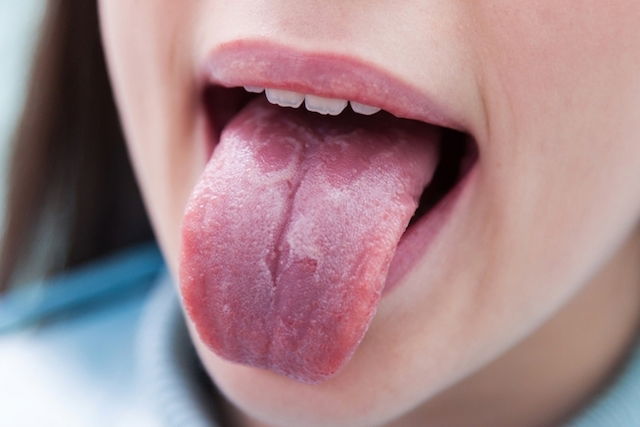Spots on the tongue are usually related to poor oral hygiene habits, which can result in dark or white spots. These spots usually are a sign of excessive harmful microorganisms in the mouth.
Furthermore, the spots on the tongue can also be a result of a burn, food, tongue cancer or geographic tongue.
To avoid spots on the tongue, patients are advised to maintain adequate oral hygiene with both tooth and tongue brushing. If the spots do not disappear, even with improved hygiene habits, or if you notice other symptoms, you should consult a dentist. He or she will identify the underlying cause to initiate the most appropriate treatment approach.

Why does my tongue have spots on it?
The most common causes of spots on the tongue are:
1. Poor oral hygiene
Poor oral hygiene can lead to the appearance of dark or white spots in the mouth. This is usually accompanied by a bad breath and the formation of bacterial plaque along the teeth and gums.
What to do: To eliminate dark or white stains caused by lack of brushing your teeth, be sure to maintain a regular, daily oral hygiene routine. Be sure to brush your tongue, with movements from back to front, at least twice a day, followed by a dentist-recommended mouthwash.
2. Geographic tongue
Geographic tongue is an alteration of the tongue characterized by the presence of red, smooth and irregular spots. They do not pose any risk to the person, but are associated with pain, burning and discomfort, especially after consuming hot, spicy or acidic drinks or foods.
What to do: If you experience, geographic tongue, you should see a dentist for treatment. The doctor may prescribe analgesics, anti-inflammatories, corticosteroids, mouthwashes or anesthetic ointments. Treatment is aimed at relieving symptoms, and should be combined with diet changes that eliminate any foods that may trigger worsening.
3. Burns
Eating very spicy or hot foods can burn your tongue, which can lead to red spots on your tongue. Burns can also cause mild swelling, soreness and sensitivity.
What to do: In this situation, you may find relief in eating ice cream, sucking on ice or chewing mint gum. These help to relieve symptoms and improve discomfort. Learn more about what can cause a swollen tongue and what to do.
4. Food
Frequent or excessive consumption of coffee and tea, for example, can lead to the appearance of dark spots on the tongue. These spots on the tongue are not a sign of any serious health condition.
What to do: In these cases, improving overall oral hygiene habits help the dark spots to fade easily.
5. Excess microorganisms in the mouth
The presence of excess fungi and bacteria in the mouth can also cause the appearance of white or darkened spots on the tongue. This usually happens when the immune system is weakened, or due to lack of oral hygiene.
What to do: In these cases, you are advised to ramp-up mouth and tongue brushing to avoid the accumulation of food debris in the mouth, as this can promote fungal or bacterial growth. You should brush your teeth at least twice a day, use dental floss and use a specific dentist-prescribed mouthwash.
6. Tongue cancer
Tongue cancer can be identified by the presence of red or white spots in the mouth that do not disappear even with correct hygiene of the mouth and tongue. In addition, there may be other symptoms indicative of this type of cancer, such as pain in the tongue, bad smell and the presence of blood on the tongue, for example.
Although it is uncommon, if symptoms suggestive of tongue cancer appear, it is important to go to the dentist or general practitioner so that the diagnosis can be made and treatment can begin.






























